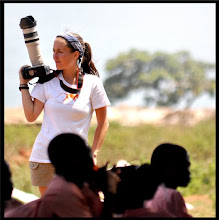1. Ensure our anti-poaching patrols work 365 days a year in 2012.
This year some of the gorilla groups we monitor spent long amounts of time outside the protected park, feeding on seasonal bamboo and other plants at the lower altitudes. Without the money raised from adoptions, we would not have been able to protect them around the clock as they wandered around.
2. Ensure the continued growth of the mountain gorilla population.
Fewer than 800 mountain gorillas remain on the planet. However, the mountain gorilla is the only type of gorilla growing in population. Help keep this momentum going!
3. Receive an adoption certificate and profile about your gorilla.
Have the unique opportunity to learn more about one of the gorillas we monitor on an intimate level. Each adoption comes with a profile that includes detailed information written by our expert field scientists about your gorilla. You’ll also get special access to a gallery of Karisoke and GRACE center gorilla photos, stories and profiles.
4. Gorilla adoption makes the perfect gift for hard-to-buy-for friends.
Stumped about what to get a friend, family member or colleague? A gorilla adoption makes the perfect feel-good gift this holiday season. Here’s what Fossey supporter, Cindy Broder, says, about her Adopt giving:
“This past holiday season I was thinking about gifts for friends and my husband’s clients, and I wanted to express our love and appreciation for them in a more meaningful way. So, I read about the gorilla adoptions, with their different choices and levels of giving. I chose to give silverback adoptions because they are so awe-inspiring that I think they make the best introduction to the gorillas."
"The response was incredible! There wasn’t one person who didn’t write and say it was the best thing anyone had ever done for them. Some of their children drew pictures of the gorillas on the thank-you cards. One friend joked that he was adding on a suite to his house so his silverback and family could come visit! It just touches peoples’ hearts in such a different way, no matter how many incredible experiences they have had.”
5. Know you are part of the solution.
The top threats facing the mountain gorilla population are all from humans: poaching, habitat destruction and disease. Be a part of the group of people that helps counter these threats and saves an important species from extinction.
Don’t let this holiday season go by without doing your part to save the gorillas you care about...
Holiday special -- free DVD of PBS/Nature special "The Gorilla King" with all Adopt orders (except Green adoption). Free shipping too!














